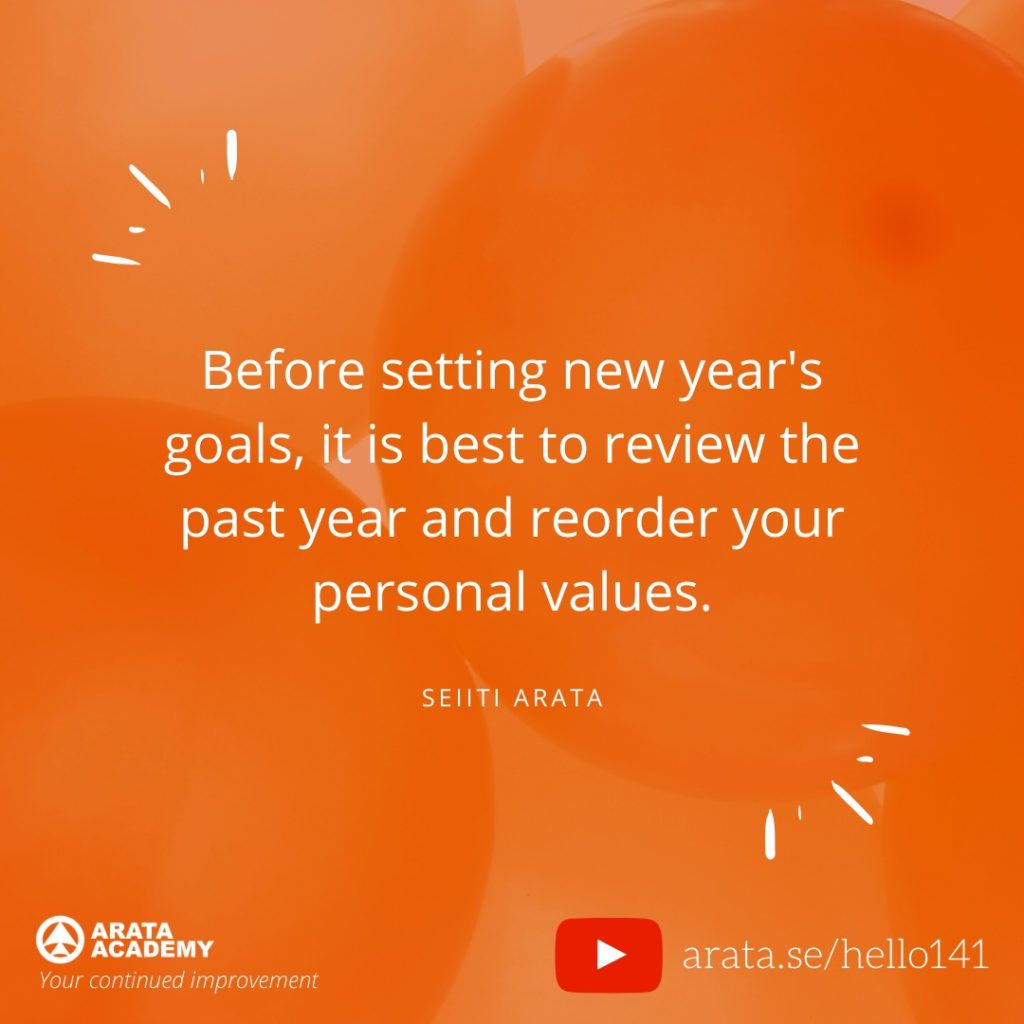Hello! Seiiti Arata. At the end of the year, many people begin to think about the future and set goals for a new cycle. But what if you did something different this time? What if you looked back to your past?
This is an idea that may seem strange, but it can bring many gains for your new year.
Understand and accept your past.
The point is not to be crying over the past or complaining about what is left behind. The idea is to learn from your mistakes and become a better version next year.
The most important thing you can do is increase your level of awareness of reality, because only then can you make rational choices based on truth. Truth is the essential basis for any good outcome.

Compare who you were with who you would like to be.
The first step in assessing the past year is to make a kind of report, a comparison of who you were and who you wish you were.
Let’s take an example. Let’s say you want to be a person who values family, health and education. You think your life would be better if you spent more time with your family members, if you were healthier and spent a few hours of your day studying and reading.
That would be your ideal. But looking back, is this what you did in practice?
In this past year, did you prioritize your family members or devote more time to them than to other activities? Did you prioritize your health? Or did you end up eating poorly, had a sedentary lifestyle and got little sleep? Did you prioritize your education or spend your free time with cheap entertainment?
This comparison is not necessarily a judgment. It’s just an observation, a realization of the difference between who you are and who you say you want to be.
Understand that you are limited.
These days there is a harmful tendency of the self-help and coaching movement to exaggerate the motivational tone, proposing that you are a special person. And if you believe in your potential, everything will work out. The failure is to recognize our own limitations.
To get closer to the truth, we need to recognize the difficulty of objectively evaluating ourselves. In order for you to have useful information, you need to get other people’s point of view as well.
We all have blind spots, areas that we cannot realize on our own. We need to be humble, curious, and active in soliciting the sincere opinion of others to bring new perspectives to our assessment.
Bring together your vision and your reality.
Once you look back and make a comparison between who you say you want to be and who you really were last year, it’s time to bring your vision closer to your reality.

This can be done in two ways. You can insist on the vision you have devised and try to bring your actions closer to your ideal version. Or you can change who you say you want to be to make plans that are more in line with who you are today.
Your goals need to be clear. For clarity, you need to prioritize what’s important. The more you raise the value of a certain goal, the more you need to reduce the relative importance of other goals.
Look to the past to improve the future.
The second step in preparing for the new year by looking back is to see what mistakes you made so far. And so avoid making the same mistakes again.
Ideally, you should get pen and paper to actually write down what mistakes you made. You can try going back and forth month after month to try to remember the things you did wrong that you no longer want to do.
This may seem painful, after all no one likes to be remembering their mistakes. Still, it’s better than facing the real pain of making the same mistake again in the year ahead.
After you write down all the mistakes you remember, start writing down how you can avoid repeating those mistakes. Do this even before you set any goals for the new year.
Reorder your personal values
The third and final step is to reorder your personal values according to the assessment you just made.
Let’s get back to our example. In it, we assume that you put family, health, and education as the top three personal values.
But when you look at what you really did last year, you saw that in practice you ended up valuing work, fun and finances.
Now you have to identify which of these values you really want to prioritize. You can insist on what you say you value, or you can create a new set of priority values.
The important thing here is, instead of just looking at the new year as a blank sheet, to be clear about what you did last year to bring your planning closer to your reality. This is how you can avoid repeating the same mistakes.

To build a good future, you need to accept reality, understanding your own limitations and analyzing your past. This allows you to identify errors that need to be corrected. You can reevaluate your priorities according to your values. This is how you create a quality plan.
The new year is an excellent opportunity for you to chart new directions for your life. Use this opportunity to the best of your ability, looking to the past as a way to ensure a brighter future.
If you want to live the best year of your life, visit https://arata.se/betternewyear for a lesson on how to have a happier, more productive, and more fulfilling year in the areas that matter to you.

